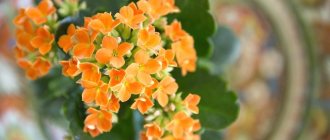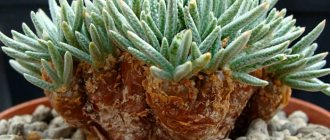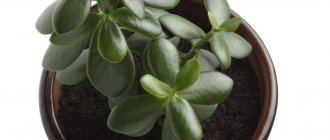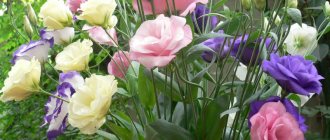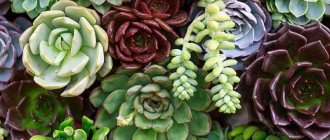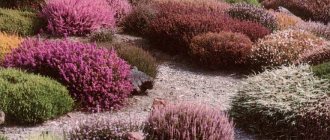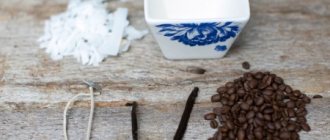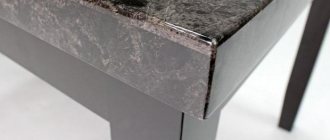Origin and appearance of dracaena
About 160 species of trees or succulent shrubs of the genus Dracaenaceae grow in the natural environment. The distribution area covers tropical and subtropical forests of Africa, South America, Asia, and the Canary Islands. The plant belongs to the Asparagus family. Wild trees reach a height of 20 m.
The plant Dracaena gets its name from the bright red color of the resin of Dracaena Draco, one of its species growing in the Canary Islands. According to legend, trees grew from drops of the blood of a slain dragon. Currently, 4 more species are known that secrete the same resin. Science explains the appearance of red droplets on the cracks of the trunk by the presence of dark red gum in the resin.
“Dragon’s blood” is used for medicinal purposes, varnish is obtained from it for processing metal products, and is also used as a natural dye.
Interesting! In South America, the plant is called the “tree of happiness.” According to legend, it brings love, happiness and prosperity to the house.
Dracaena leaves grow from apical rosettes. The flowers open at night and have a pleasant scent.
Indoor dracaena grows up to 2 m in height and above. Indoors it can live up to 15 years.
It is grown in apartments, summer gardens, greenhouses, and it often decorates the lobbies of hotels and restaurants. This is facilitated by the fact that caring for indoor dracaenas usually does not cause problems.
Dracaena in the interior of the house
Before purchasing a tree, you must immediately determine where the dracaena palm tree will grow and how much space it can take up. Depending on the conditions of detention, dwarf, compact or tall plants are selected.
Types of dracaena for indoor cultivation
Hyacinth - home care, growing in a pot
About 15 species of dracaenas are grown indoors.
Dracaena Marginata
It is also called bordered. This is due to the fact that this species has green leaves with a white or red edge. Dracaena Marginata was brought to Europe from the island. Madagascar.
The indoor flower grows up to 3 m in height, so it is grown in high and spacious rooms. The leaves are glossy and hard. The leaf plate reaches up to 0.8 m in length and 15 mm in width. Old leaves fall off on their own. Belongs to narrow-leaved varieties.
The stem is thick, weakly branched. It clearly shows the attachment points of old fallen leaves.
Depending on the color of the leaves, dracaenas are classified as Magenta, Bicolor, Tricolor.
Dracaena Tricolor
In Magenta, the leaves have a crimson edging, in Bicolor they have longitudinal pink stripes, Tricolor has leaves of three colors: narrow red and yellow stripes are located on a green background.
Dracaena Draco
The second name is Dracaena Canarian. Indoors it grows up to 1.5 m. The leaves are grayish-green with clearly visible veins. The length of the leaf plate reaches 60 cm, width – up to 30 mm. The tree is native to Ethiopia and the Canary Islands.
With sufficient light, the leaves take on a reddish tint.
dragon tree
The barrel is powerful. Has many shoots.
Dracaena Cordyline Australis
It grows wild in New Zealand on rocky slopes. Under natural conditions it reaches 7 m in height. The tree trunk has practically no branches.
Leaf length is up to 1 m. The color is bright green above and bluish below. There may be a red border along the edge. The central vein of the leaf blade is orange or red in color.
Bush dracaena
Brought to Europe from Africa. The leaves have a uniform green or striped color. The bush species is one of the hardiest types of dracaenas.
Deremska Warneki
The height of the tree is up to 2 m. The leaves are green, with a white longitudinal stripe in the middle and small light stripes scattered along the leaf blade. Flowers are white.
Deremska Bauzey
Just like Deremskaya Varneki, this variety has a white stripe in the center of the leaf, but, unlike it, it has dark green stripes along the edges of the leaf.
The thick trunks of Dracaena derema are densely leafy.
D. Fragrans, or fragrant dracaena
The homeland of fragrant dracaena is Africa. The leaf reaches 65 cm in length and 10 cm in width. In the center of the leaf there is a longitudinal stripe of gray, yellow, yellow-green colors.
Fragrant dracaena flowers are small in size, have a pleasant aroma, and are collected in paniculate inflorescences. In indoor conditions, the tree can bloom once every 7-10 years.
The most common varieties:
- Fragrant Knerki. The plant has long leaves of a dark green color with a narrow stripe in the middle of a lighter shade.
- Fragrant Lindeny. The leaf is green, with a yellow or white stripe along its edge.
- Fragrant Massanja. Tall decorative tree. It has leaves up to 60 cm long. There is a wide strip in the center of the leaf plate. The crown is dense.
- Fragrant Rotiana. The leaf plate has a narrow border of a yellowish tint on both sides.
- Fragrant Stednery. Tall variety. It has long, lanceolate-shaped leaves of bright green color with dark stripes.
Dracaena fragrant Stedneri
Transplanting dracaena into a pot
How dracaena blooms - what types, proper care
After purchasing, the plant needs to be transplanted from the planting container into a flower pot. Also, dracaena is replanted at a young age annually, an adult tree - once every 3-4 years. Transplantation is best done in the spring.
What is needed for planting
For transplantation you will need:
- flower pot;
- priming;
- drainage material;
- gloves;
- water for irrigation;
- pruner
The flower pot is selected larger than the planting container so that it contains the entire root system and has a margin of 2-3 cm. The material from which the container is made does not matter.
Neutral soil intended for growing palm trees, ficuses, etc. is suitable as soil. It can be purchased in a store or made independently from turf and leaf soil with the addition of sand and high-moor peat.
You can use fine gravel, pieces of broken brick or expanded clay as drainage.
Optimal place
For the normal development of an indoor flower, it is important to choose the right place for it.
Dragon tree in the house
The optimal conditions for dracaena during the growing season are as follows:
- Temperature – from +18 to +22°С.
- Placement on eastern or south-eastern window sills. You can install a flower pot at some distance from the south window.
- For normal development, the plant needs to have sufficient lighting. The tree loves diffused light, so it is necessary to prevent direct sunlight from hitting the leaves. A plant with variegated leaves requires more light than a tree with monochromatic leaves.
- The selected location should be protected from drafts. You cannot place the flower next to the air conditioner. It is also necessary to exclude sudden fluctuations in ambient temperature.
Step by step planting process
Replanting a dracaena plant is easy. It is important to strictly follow the sequence of steps.
Attention! It is not recommended to replant the plant immediately after purchase. It must get used to the new place. A quick transplant into a new flower pot is performed only if the plant looks sick.
Sequencing:
- Pour a thick layer of drainage into the prepared flower pot (up to 1/4-1/5 of the capacity).
- Pour some soil on top.
- Remove the plant from the container and inspect the roots. Damaged or rotten - remove. Sprinkle the cut area with crushed charcoal.
- If the plant has a normal appearance, is not sick and develops normally, then replanting is best done by transshipment, since this method is more gentle on the root system.
Dracaena transplant
- Fill the remaining voids with soil.
- Water the soil generously with water.
- The second watering should be done after about 10 days. If the plant is sick after planting, add a root growth stimulator, for example, Kornevin (1 g of the drug per 1 liter of water), to the water for irrigation.
Possible problems in cultivation and diseases
Dracaena derema is a species that is not highly resistant to disease, and it is often attacked by insect pests.
Drops buds and leaves
Leaves droop and begin to fall due to lack of moisture and nutrients in the soil. It is worth feeding and watering the plant regularly.
The leaves are turning pale
The bush begins to fade when it lacks fertilizer and sunlight. The lack of iron is especially affected, which can be solved by spraying the bush with a solution of iron sulfate.
The tips of the leaves are drying out
The edges of the sheet plates will dry out due to prolonged exposure to the bright sun. On hot sunny days, it is worth moving the pot with dracaena away from the window and into the interior of the room.
The lower leaves fall off
This is how the plant behaves after hypothermia or watering with cold water. You should not allow a sharp drop in temperature, as the plant is heat-loving.
Pests
The following pests cause particular problems for the bush:
- scale insect – the leaves begin to turn black and wither;
- thrips - white dots appear on the front side of the leaves, and on the back the insects themselves are located in the form of black dots;
- spider mite - entwines the plates and stems with a thin web, sucks the juices out of them.
Other problems
If dry spots appear on the leaves, it means the plant has received sunburn. Do not water it during the day in sunny weather or leave it in direct sunlight.
Blooming dracaena is a good omen
Dracaena propagation
Dracaena Sander flower - planting and care
The tree is propagated using cuttings, air layering and seeds.
Cuttings
With this method of propagation, two types of cuttings are used: apical and stem. In the first case, the apical part of the shoot measuring 10-15 cm is cut off. The cut should be smooth.
Propagation by apical cuttings
Next, it is placed in a glass of water. The water in the glass should be at room temperature. During the process of root germination, the water may become cloudy. In this case, it is replaced with a fresh one.
Additionally, before rooting, the cutting can be kept in a solution of growth stimulants Epin or Zircon.
You can also place the cuttings in a box with a prepared moist substrate of peat and sand or ready-made soil for palm trees.
The planted cuttings are covered with a glass jar or plastic bag to create a mini-greenhouse.
Periodically, the cover is removed and the planting is ventilated.
When using stem cuttings, the shoot is cut into pieces 5-20 cm in size. Each piece should have 2-3 buds. It is buried 2-3 cm into the substrate or laid horizontally and covered with a layer of earth on top.
Horizontal germination of cuttings
A mini-greenhouse is built over the cuttings. Rooting occurs within 1-1.5 months.
Growing from seeds
Planting material can be purchased in stores or obtained independently.
Seeds are sown in a peat-sand substrate to a depth of 0.5-1 cm and covered with glass or plastic film. The germination container is kept at a temperature from +25°C to +30°C.
The seeds do not germinate well. Shoots appear 1-3 months after planting. When the seedlings grow to 4-5 cm, they are picked and planted in separate pots.
Features of caring for Dracaena Deremskaya
Dracaena Sandera flower - planting and care
Dracaena Derema does not require complex care at home.
- The plant feels good on a shaded window. Exposure to direct sunlight may cause burns on the leaves. Partial shade is the best option. If there is not enough light, the leaves will lose their characteristic variegated color. Green color will predominate.
- The flower prefers high air humidity, but this is not a necessary condition.
- The dracaena plant comes from warm countries, so it does not tolerate low indoor temperatures. It must be at least 20 degrees, in winter 18 is allowed. The critical temperature for a flower is 12 degrees. If left in such conditions, it will freeze and die.
- The African beauty does not like drafts. With sudden changes in temperature, the leaves of the plant can curl into a tube.
- It is recommended to water two or three times a week, even less often in winter. During these intervals the soil should dry out. The roots do not like constant dampness; they may begin to rot and the plant will wither. If the leaves turn black and dry, there is not enough water for irrigation.
- You can spray every day. A warm shower will give the plant a well-groomed appearance and will wash the surface of the leaves, which will look bright and fresh. It will create increased air humidity around the flower, which dracaena loves so much. It is advisable not to place the flowerpot above a radiator.
Important! The main rule of care is not to leave water in the plant’s tray. It must be poured out immediately. Or place the flowerpot in a tray on a layer of small pebbles so that the roots are not wet. Make sure that water does not get into the leaf axils when spraying. It's better to sprinkle them around the edges.
Dracaena care
Caring for the dracaena houseplant at home is simple. In order for the plant to develop normally, it is necessary to fulfill the basic agrotechnical requirements for growing a flower.
In the spring-summer period, a flower pot with a tree can be taken out to an open balcony, loggia or garden.
During this period, it is advisable not to allow the air temperature to be above 27°C.
Watering mode
The home flower dracaena is a moisture-loving plant. Therefore, watering should be plentiful. Broad-leaved species require more watering than narrow-leaved species.
Attention! Do not allow the earthen ball to dry out and water to stagnate in the flower pot.
During the growing season, it is enough to water the flower once a day.
The tree reacts poorly to increased concentrations of chlorine, fluorine and bromine in water and soil. Therefore, settled or rainwater is used for irrigation. If there is a lot of fluoride in tap water, it is filtered.
After watering, it is recommended to loosen the soil in the pot.
During the growing season, it is necessary to periodically wipe the leaves with a damp cloth. This will give the flower a beautiful appearance and will clean the leaf pores from dust. Also, the plant is sprayed with warm water 2 times a month. Spraying is carried out in the morning or evening.
If you do not humidify the air, the ends of the leaves will turn yellow and dry out. In addition, dry air is an ideal breeding ground for scale insects, spider mites and other pests. So spraying is also disease prevention.
Top dressing
It is carried out during the growing season. For it, use complex fertilizers or the mineral composition “Dracaena”. The concentration of the working solution is carried out according to the instructions. Typically, the frequency of fertilizing is once every 2 weeks.
During the flowering period
Indoor dracaenas bloom very rarely. Young plants begin to bloom at the age of 8 to 11 years.
The flowers are small, white or yellowish in color, collected in panicles. In fragrant dracaena they have a sweetish delicate aroma; in other species the smell can be unpleasant.
Dracaena flower
Caring for the flowering period is no different from caring for the plant during the growing season.
During the rest period
How to care for indoor dracaena in a pot at home during the dormant period? At this time, it is not recommended to place the flower near heating radiators, since the air in these places is hot and dry.
The optimal conditions for keeping a tree in winter are to maintain the air temperature at +15°C and moderate watering (as the soil dries out). For variegated varieties, the temperature in winter is slightly higher.
Feeding is carried out once a month or not at all.
Preparing for winter
In order for the plant to prepare for the winter period, in the fall the amount of watering is gradually reduced and the temperature is lowered. They also increase the period of time between feedings. During this period, it is necessary to exclude nitrogenous fertilizers so that they do not stimulate the growth of the green mass of the flower.
Dracaena is a very beautiful and spectacular plant that will fit perfectly into the interior of any room.
Features of caring for Dracaena Derema at home
Caring for Dracaena derema at home is simple, which makes the flower in demand in home floriculture.
Temperature
Dracaena - species Marginata, Deremskaya, Fragrance, Massangeana
Caring for dracaena correctly means maintaining a constant temperature. In summer it should be between 21-24 ℃ above zero, with the arrival of autumn it is gradually lowered to 16-19 ℃.
Lighting
The lighting should be diffused, so it is better to place the pot in partial shade or on the western and eastern windows of the premises.
Important! During the summer sunny period, the flower should not be allowed to remain in the sun for a long time, otherwise burns will appear on the leaves.
The shrub is watered frequently and abundantly
Watering
It is recommended to water the plant twice a week. If excess moisture accumulates in the pan, it must be drained. Water for irrigation should be at room temperature and free of harmful impurities.
Spraying
The bush requires daily spraying; once a week it is placed in the shower to clean all hard-to-reach places from dirt.
Humidity
Dry air causes dracaena foliage to dry out, so indoor humidity should be at least 40% all year round.
Priming
The soil for growing should be constantly loose and moist. It is worth maintaining the pH level within 5.5-6.
Note! Don't forget about nutrients. Fertilizers should be added to the soil periodically.
Feeding
You need to take care of the bush regularly and feed it. It is advisable to fertilize once every 2 weeks. For this, ordinary superphosphate or saltpeter is used. It is also possible to use special complex mineral preparations: Fasco, Agricola or Stimul.
